While all of us would love to benefit from the solar panels installed atop our houses, not all of us have the suitable roof structure for it. Sometimes the roof has certain characters that would prevent you from yielding the benefits of solar. In such cases you have two options, either go for ground mounted solar panels or better yet go for community solar.

In this article we discuss what is community solar? Who should go for community solar panels? What are the pros and cons of community solar and how exactly does community solar work? There are different ways in which you can be a part of the community solar program. We talked in detail about all of this, so that you can make an informed choice when choosing to go for a solar panel. Because while community solar may seem like no maintenance options, it can get a little tricky. Being aware of all sides of the situation is very important when it comes to an investment as big as solar energy whether it is for your home or your commercial enterprise.
A lot of people live in rented apartments and do not have access to solar panels, they are not allowed to mount something on their rented residence or the roof in their apartment building is not structured such that it can support solar panel installation. This does not mean that they have to be devoid of the benefits of solar panels. They can very easily opt for community solar panels. Community solar programs are bringing the low to moderate income group into the solar community and allowing them to access the benefits of solar panels without having to bear the excessive cost of installation. This is helping more and more people gain the benefits of solar and become less and less dependent on conventional sources of energy.
What is community solar?
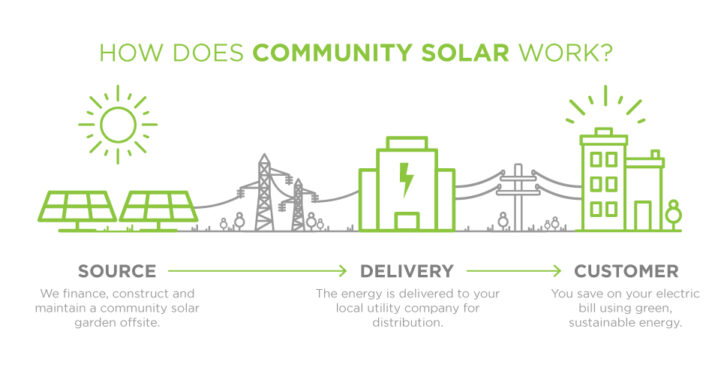
Community solar program is a large central solar power plant which produces electricity that is then shared with a number of users. No single person is the property owner and is the sole user of the community solar panels. It is similar to the way you purchase electricity from your power grid, the only difference is that community solar is cheaper and depends on a greener source of energy. In case of community solar the size of solar installation is measured in terms of Megawatts, unlike the residential solar installation which is measured in Kilowatts. This means that one community solar project can provide electrical supply for over a thousand houses.
According to the US department of energy, a community solar is any solar project located within a geographical unit, wherein the electricity produced is shared by multiple customers including residential owners as well as commercial groups. Usually, the users benefit from energy generated by solar panels that are located at an off- site array.
The users in community solar programs have two options, they can either buy a portion of the community solar panels or lease the array. At the end of the billing cycle (a month or a quarter depending on your area) they get an electric bill credit for the electricity that has been generated by the portion of solar panels that they own/lease. In this manner, community solar systems are similar to the solar systems individuals install at their homes. Community solar becomes a great option for people who reduce their electricity bill and cease their dependency on power-grids. The people who are not able to install solar panels at their homes because they are not the owners of the house or because they have some financial crunch, or the roof does not support the Pv panels, can also enjoy the benefits of solar energy with community solar projects.
By purchasing just a share of or subscribing to a community solar program, people like renters or those who live in shared housing, can easily enjoy the benefits of solar energy while significantly reducing their electricity bills. This helps small business owners, organizations and residents get credits on their electricity bills because of the power generated by their share of solar panels, thus giving them a passive income source.
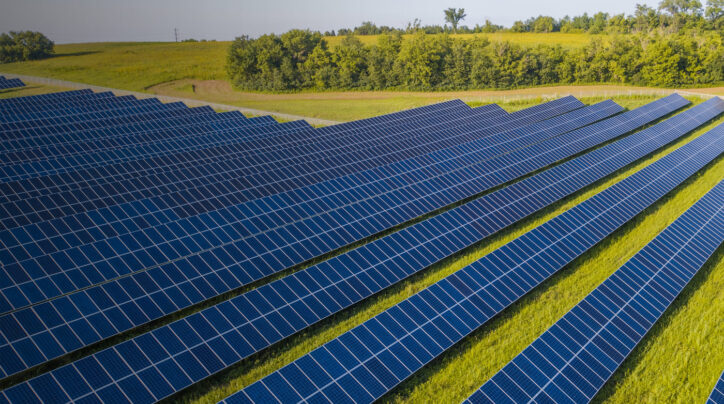
Thus community solar enables an equal access for everyone to the economic and environmental benefits of solar energy. They are usually sized at 5 megawatts and can vary in terms of the area covered by them. However, contrary to the solar panels installed at homes or at commercial enterprises, community solar programs are not established on a sold off farm, it is usually installed on leased land and the land can be returned to the original state.
How does community solar work?
Community solar models are different in different states. In 2020, about one third of the states in the USA had enabling policies to facilitate community solar. These states have passed various legislations in order to create a third party market for community solar. The project developers and utilities in these markets need to follow certain regulations laid down by the legislation if they wish to enrol customers and develop community solar projects. The community solar projects operating outside the states are developed by local utilities which typically entail smaller municipal or cooperative utilities.
Apart from the off site model of community solar, which is more commonly used, another community solar model is on-site multifamily model. In the on-site multifamily community solar model, the solar panels are placed on top of a shared living space like an apartment or a condominium building. The occupants benefit from the energy produced by the community solar array installed on the rooftop.
Since the laws and regulations differ in different states, every subscriber or owner of the community solar panel is presented with differing economic opportunities. In locations where the state has enabling policies the community solar users get two bills, one for the community solar for the portion of solar panels they own, and the other for the conventional power-grid electricity that they used during the billing cycle. Some of the states are trying to integrate the two bills together in order to make the process simpler for the users.
Community solar participation models
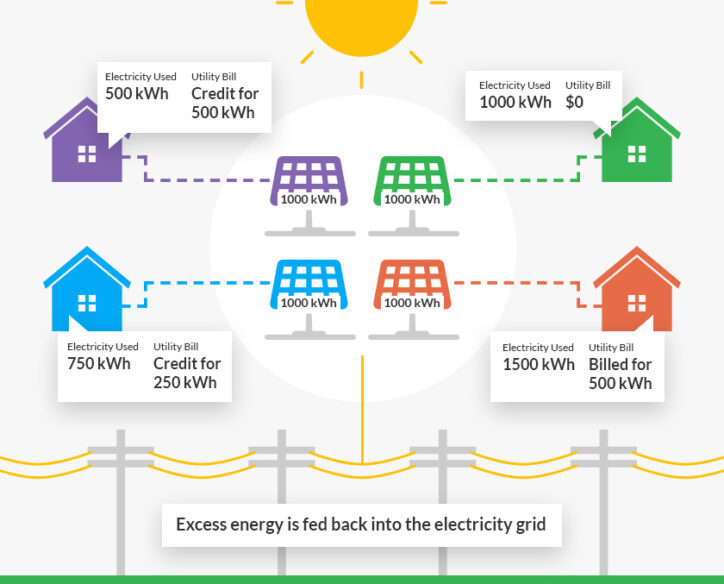
There are two formats in which the community solar is offered to the users.
Ownership model: in the ownership model you get the ownership of a particular number of solar panels from the community solar setup, or you get a portion of the community solar project. Once purchased, you will get the bills, credits as well as savings from the energy that is produced and used by your portion of the solar panels.
Subscription model: this model is similar to conventional power-grid electricity that we use. Like you get a bill every one for the amount of electricity you use, similarly you would get a bill for the amount of solar energy that you use every month. The only difference is that in the subscription model, you will pay significantly less as compared to the conventional power-grid electricity. In this way the users can lower their electricity bills while at the same time avoiding the hassles of investing in solar panels themselves.
A community solar program can be structured as utility owned, special purpose entity, or developer owned. The goals that they are supposed to achieve may vary but they all have three key actors in common: the host, the sponsor and the subscriber.
The host is the individual who owns the site where the community solar project is constructed, the subscribers are the users of the solar energy generated by the community solar project (these can be homeowners, businesspersons, local governments etc.), and the sponsor is the one who manages the community solar project as well as the relationship of the subscribers with the utility.
Ownership-based projects
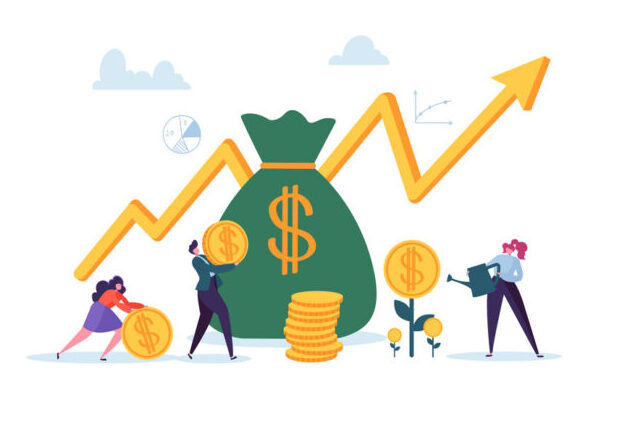
Ownership based projects are similar to having your own solar panel installed atop your house, the only difference is the panels will not be installed on the roof, you would have panels placed at a remote location from which you will be supplied electricity. You own either a portion of or a number of solar panels from out of the total number of panels in the community solar project.
Herein, you are provided with only as much electricity as is needed by you to sustain your energy requirements. And at the end of the billing cycle, the amount for the energy that was generated surplus is credited to you. Thus, like the residential solar panels, community solar panels can also be a source of income for you given your consumption does not exceed the amount of energy generated.
UTILITY-OWNED MODEL
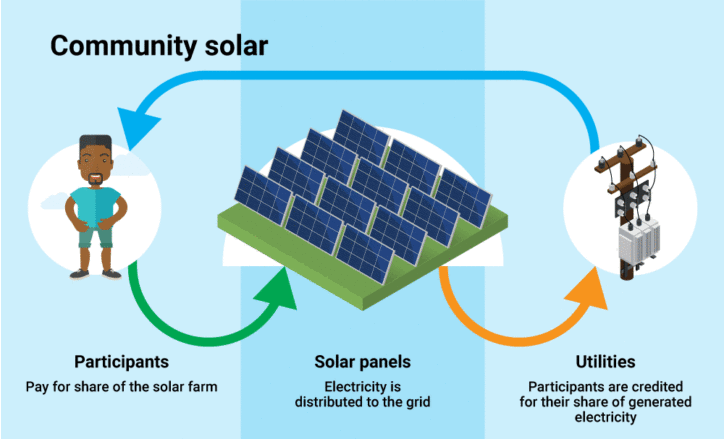
As per the utility owned model, the solar array is owned by the local utility, these solar panels are sold or leased to the subscribers by the local utility company. The subscribers have the choice to buy a share of the community solar supply for which they get bill credits at the end of the month. That means they get paid for the amount of electricity that was produced by their share of the solar panels. Thus the subscribers have the benefits of a solar panel installation minus having to actually get the panel installed themselves.
(1) a site for the construction of the community solar project is selected by a third party organization, who acts as the sponsor, or the local utility. The sponsor usually starts pre-selling the solar panel units to the customers living within the locality, that is the service region of the utility. This way, the cost that is paid by the buyers is used to cover the expenses of building the community solar project including the installation of solar panels, installation and maintenance of other necessary equipment, operations of the solar array.
(2) after the solar units are pre-sold, the financing is provided by the lenders and this marks the advent of the development process on the land that is owned by the host. Sometimes, the land is also leased from the host, in which case, the host is paid a monthly fee by the sponsor. The sponsor is responsible for supervising the developmental process in this case. The sponsor is also responsible for operating and maintaining the project once it is complete.
(3) Once the construction is complete, and electricity begins to be is fed into the grid by the community solar panels, it is the responsibility of the sponsor to distribute virtual net metering credits to the subscribers.
This is how a utility owned model works.
SPECIAL PURPOSE ENTITY (SPE) MODEL
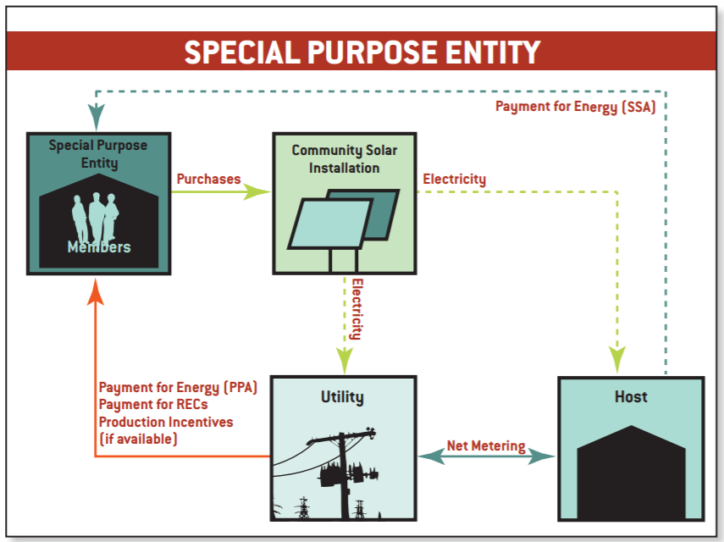
Another way to structure Community solar is through a Special Purpose Entity (SPE) model. In this case, a group of individuals come together to set up a limited liability company (LLC). This LLC set up by the individuals in collaboration becomes the sponsor and the members become its subscribers. They receive the bill credits from the community solar project set up by them in partnership. In the case of the special purpose entity model, the LLC fulfills the responsibilities of the sponsor, this means that it is responsible to make the lease payments to the host, it is also the work of the LLC to maintain the relationship with the utility as well as operate the solar array. To avoid mostly time-intensive operations, the LLCs formed must have to be careful about the investment structures. If they are not careful about this, it can trigger the security and exchange commission regulations, thus costing them heavily in terms of operations.
DEVELOPER-OWNED MODEL
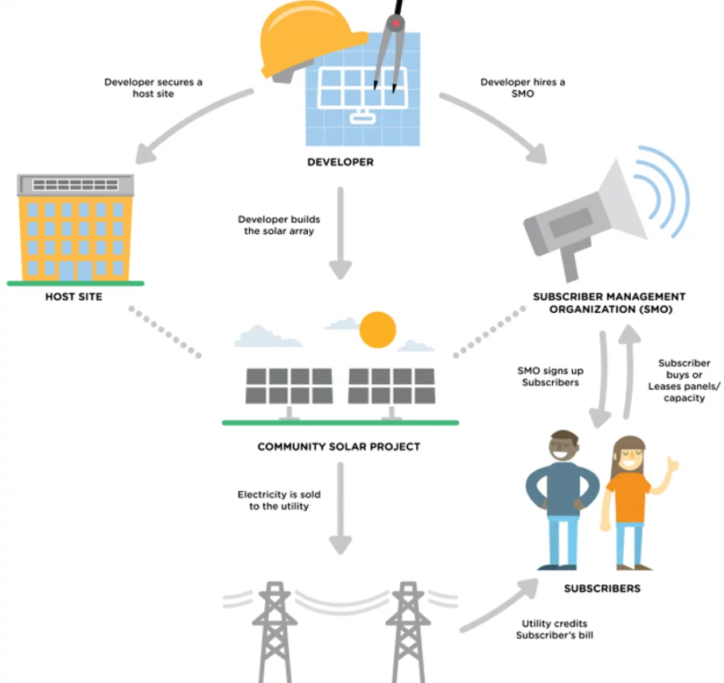
In the case of the developer-owned model, the developer finds the host’s site, and leases from the host for agreed upon terms. The developer is responsible for building the community solar project, maintaining it and dealing with the subscribers. Subscribers have the choice to either get a lease or enter into a power purchase agreement with the developer. If the subscribers choose to go with the lease, they pay a monthly payment to the sponsor for the electricity that they use. On the other hand, if the subscribers choose to sign a PPA with the sponsor, the electricity is sold to the user at a set rate. Either way, the subscribers get bill credit for the electricity that they provide to the grid.
‘Subscription’-based projects
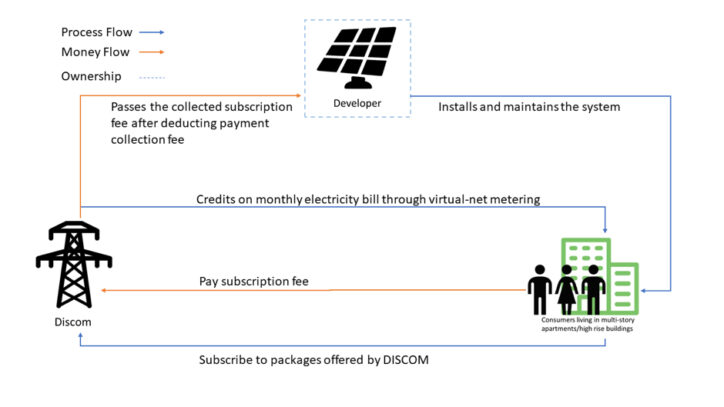
Subscription based community solar projects are more common than the ownership model. The prices and other details of the program may be different depending upon the project itself, however certain elements of the model remain the same. For instance, most of the subscription-based projects do not require an upfront fee to join the program. Thus, the users get bill savings right away. The only catch is that you would need to be in vicinity to the community solar project to attain its benefits. Most of the time, the users have to be in the coverage of the utility to avail the benefits of community solar projects. Another thing to consider is that a lot of community solar projects have an upper limit on the amount of electricity that you can receive from the project. For instance, the upper limit in most cases is that you cannot receive electricity more than the 120 per cent of your average monthly usage.
Pros and cons of community solar:
Community solar offers a lot of benefits to the users and takes away a lot of responsibilities associated with installing a solar panel on one’s own property. However, as with all good things, community solar also has certain pros and certain cons. Let us quickly take a look at some of the biggest advantages of community solar and evaluate them against the potential disadvantages of community solar.
Benefits of community solar
Reduce electricity bills with community solar
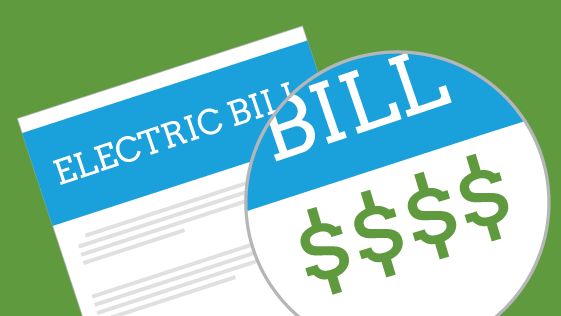
Perhaps the biggest perk of community solar is the fact that it significantly reduces your electricity bills while at the same time, it does not require any big investment upfront. Especially if you have subscribed to electricity, you are bound to see a massive decline in your utility bill from the very first month. However, be sure to go over the factors that influence the rate of solar energy in your area. Among other things, these factors include:
- The price of the community solar program that you plan to participate in
- The rate of electricity in your area presently
- The total cost of purchasing or subscribing to the community solar program
- The amount of electricity you would receive from the program
Generally speaking, community solar participation can help reduce 5 to 15 % off of your electricity bills. However, the thing to note here is that some community solar projects may be more expensive than the current electricity rates charged to you by the local utility company. You should first evaluate the monthly cost for conventional electricity and compare it with the cost of solar energy, before you make the switch to community solar program.
Financial benefits of community solar with Virtual metering:
Virtual net metering is a policy that is adopted in community solar projects. What is virtual net metering? How does virtual net metering benefit the users of community solar?
Virtual net metering is similar to net metering which is used in on-grid or grid-tied solar systems virtual net metering also allows the participants to get bill credits for the portion of solar panels that they own.
In the way that net metering lets you use the personal solar power system to offset the electricity bills, similarly virtual metering allows you to get bill credits for the amount of surplus electricity that your portion of the solar power produces. When you pull more electricity from the community solar than that which is produced by your portion of the solar panels, you will get charged for it. Since you are getting charged for and credit for solar panels situated at a remote location, thus the term ‘virtual’ is used to refer to the type net metering.
Because of virtual net metering you can even have passive income if your portion of the solar panels produce more electricity than the amount that you use. Even if they don’t produce more electricity than your consumption, your electricity bill when using community solar is bound to be far less than the bill you used to get using conventionally generated electricity.
You don’t have to be a house owner to benefit from community solar:
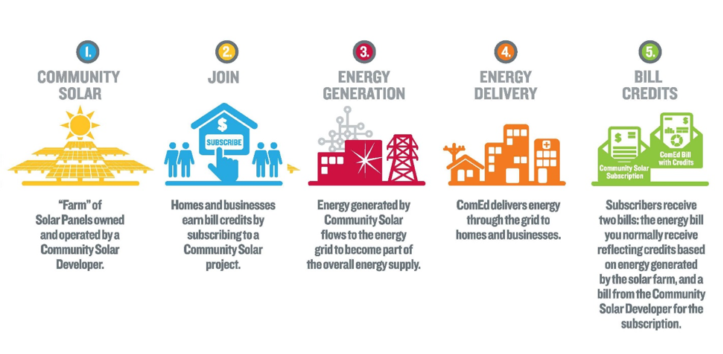
Often people are not able to install solar panels on their roofs because they are not the owners of the house, or because they live in a shared residence like an apartment building or a condominium. About 79 million adults in the USA live in shared housing. For these people not to go solar is not an option. For them, the most viable option for them is to use community solar projects. Besides, if you move regularly, you cannot possibly think about installing a solar panel atop your house. For this, the best option is a community solar program. In case of the community solar of the community solar panels, when you move, oftentimes you are allowed to transfer your ownership to a new renter or owner or another customer in the utility. Some sponsors charge cancellation fees from you.
Cons of community solar
Community solar is not all rainbows and sunshine, there are various downsides to using community solar, some of which we have discussed below.
No solar incentives for Community solar users.
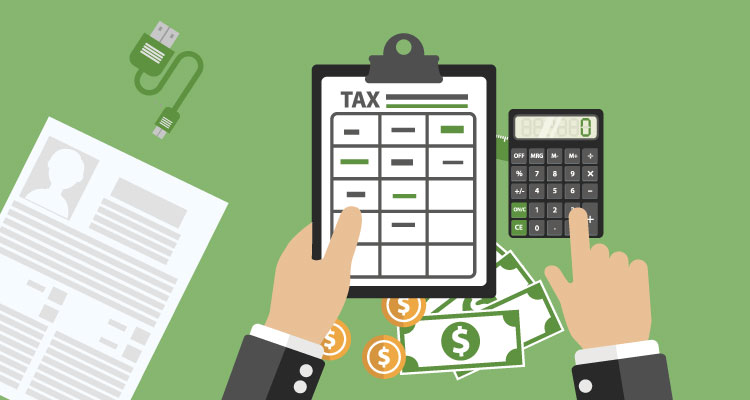
Many of the solar incentives given by the state and the federal government are conditioned upon ownership of the solar panels or solar power systems. The people who participate in the community solar as subscribers, do not own the solar panel, they simply pay for the electricity generated by the solar panels owned by the sponsor or the host. These people are not eligible for the solar incentives and benefits or tax rebates given the government for using solar energy. The developers or the solar company who own the solar farm (community solar project) will get the benefits.
As opposed to this, if you participate in the community solar project via the ownership model, you would own a portion of the solar farm, that means you will have a certain number of solar panels to your name. In this case, you would be eligible for some of the tax benefits and solar incentives. However, there are specific criteria to be eligible for solar incentives and tax rebates that one must qualify.
Community solar farms can take up a lot of space
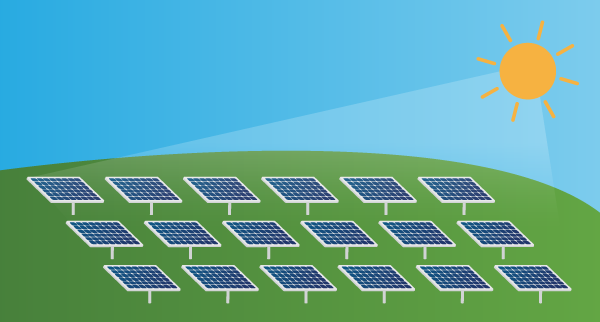
As mentioned earlier, the community solar projects are measured in terms of megawatts and can take up several acres of area. The developer needs a large area which gets a lot of sunlight. To obtain such land, the developer may be forced to clear forest area, thus causing deforestation. So, while solar energy itself may be very eco-friendly, the initial process of development may cause serious damage to the environment. Starting from deforestation that causes immense habitat loss, to acquiring the forest area to manufacturing processes that cause pollution, setting a community solar might not be the most eco-friendly choice.
While there is a workaround to the deforestation downfall, the environmental issues still persist. In order to avoid deforestation, developers can acquire otherwise unusable land or brownfields to set up the community solar project. To ensure you are making a truly environmental decision, you could go with a company that demonstrates sustainable land-use practices. Like many community solar farms are built on dual-land use, the also function as grazing fields.
Community solar is becoming more and more popular every day. As of 2020, the total capacity of community solar in the USA is 3.1 gigawatts. It is becoming increasingly available in the states, at present 39 states have community solar. The government has developed 20 new community solar project just the year 2020, (till 2019 the only had 19 states with community solar projects)
In order to equip more states with community solar facilities, the states need to pass legislation that enables the development of community solar. Many solar companies in the USA are offering community solar participation to their users. You can also find out the solar companies in your area and check whether they offer community solar or not.
